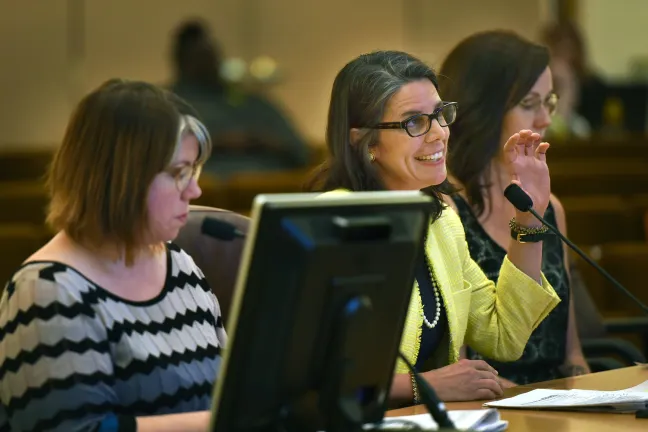Despite a number of aggressive programs aimed at alleviating hunger, one in five Multnomah County residents still doesn’t have consistent access to adequate food. Many have found their food budgets squeezed by the rising cost of other basic necessities, like housing, transportation and child care.
“While we’ve come a long way in our food and hunger work in this community and in this state, particularly following the Great Recession, we have new and different work to do,” Department of County Human Services director Liesl Wendt said. “As the cost of other basic necessities go up, food budgets have become even more of a challenge.”
Wendt appeared before the Board of Commissioners Tuesday to provide an update on the department’s strategies for eliminating hunger and food insecurity and to encourage a more “upstream” approach to addressing those issues.
A family of four, two adults and two children, would ideally be able to afford 372 meals each month at a cost of $900 to $1,100, Multnomah County Food Policy Coordinator Robyn Johnson said.
A family that size living in poverty has to piece those meals together -- using access to Supplemental Nutrition Assistance Program (SNAP), school meals, Women, Infants and Children (WIC) and emergency food assistance -- and they still often come up more than 100 meals short, Johnson said.
The lack of access is a predictor of poor health in older people, associated with increased risk of heart disease, cancer, stroke, pulmonary disease or diabetes, Johnson said. Meanwhile, the lack of affordable and available food has a disproportionate impact on African Americans and can exacerbate health inequities and chronic disease.
Multnomah County has invested heavily in a number of programs and initiatives directed at alleviating hunger and food insecurity.
For example, with support from the county, community partners including IRCO, El Programa Hispano, Asian Health and Service Center and NAYA, serve about 23,000 meals a year to seniors at four meal sites across the county.
However, solving hunger and improving food security, Wendt said, cannot be done simply by distributing more food.
“Ideally we would like to be more upstream in our efforts,” Wendt said.
Because food insecurity and hunger are symptoms of poverty, they require solutions, such as policies that address the circumstances that create food insecurity in the first place, Wendt said.
She recommended that the county investigate policies and programs targeted, among other things, at poverty reduction, workforce supports and providing easier access to school meals such as by offering breakfast to all students to eliminate the stigma associated with eating breakfast at school.
“We want to be sure that people are able to move out of poverty and be able to take care of their own food needs,” Wendt said.

